Drop Scones, Scottish pancakes, Scotch Pancakes, or even Pikelets; whatever you call them, these little fluffy circles of deliciousness are easy to make and so tasty to eat!
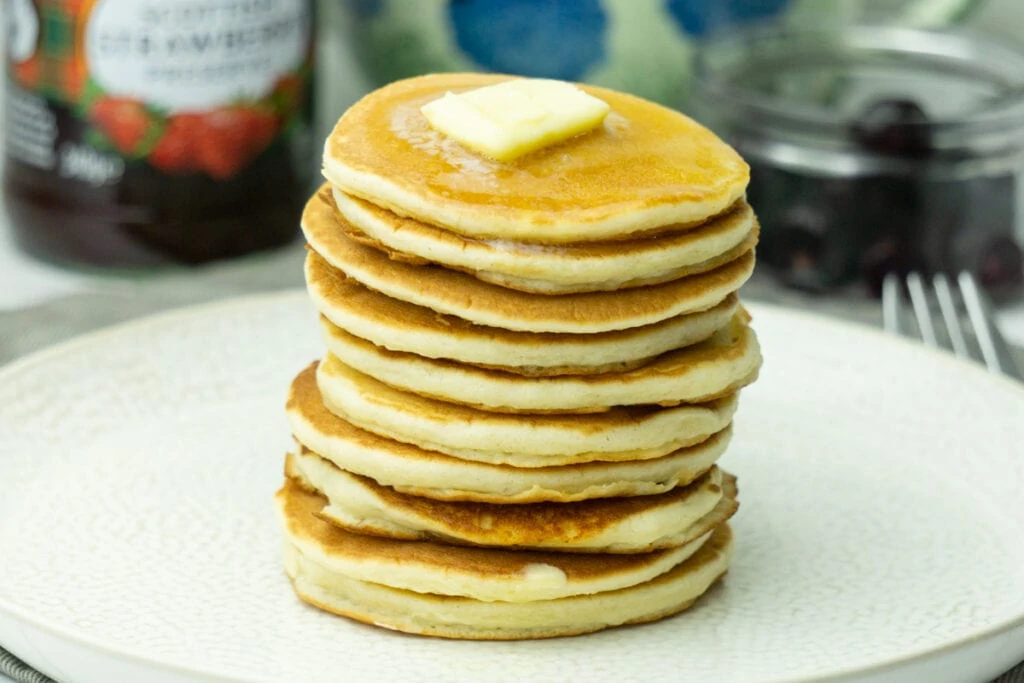
Whether you eat them for breakfast or as a snack, drop scones are so flexible. My grandma used to serve hers with jam and a dollop of cream on each one, or sometimes just a slathering of butter. In our house, we’re partial to a bit of honey or golden syrup too.
Why are they called Drop Scones?
Drop Scones get their name from the action of dropping the mixture onto the hot griddle or into a pan.
They’re also called Scotch Pancakes or Scottish Pancakes, and although they are similar in ingredients and rise to American-style pancakes they’re usually smaller in size.
To confuse things even more, we have even seen these called crumpets, as another regional variation.
When I was growing up in New Zealand we called them Pikelets!
The difference is sometimes in the fact that Drop Scones traditionally used cream or tartar and baking soda with buttermilk, rather than self-raising flour and baking powder which is more common today.
We have made our recipe with the latter, but you can easily switch the baking powder for 1/2tsp each of Baking Soda and Cream of Tartar and the milk for buttermilk if you want to be strictly traditional.
Things you’ll need to make Drop Scones/Scottish Pancakes/Scotch Pancakes
- Mixing bowl
- Flat bottomed pan
- Large teaspoon or jug for pouring the mixture
- Spatula for flipping
Ingredients for Drop Scones/Scottish Pancakes/Scotch Pancakes
Makes 16-20
- 125g (1C) Self Raising Flour
- 1tsp Baking Powder
- 1/4tsp Salt
- 50g (1/4C) Caster Sugar
- 1 Egg
- 150-175ml Milk (1/2 to 3/4C)
- Oil for greasing
You can see in our variations ideas below that it’s possible to omit or substitute the sugar, and you can also add extras to the batter for different tastes.
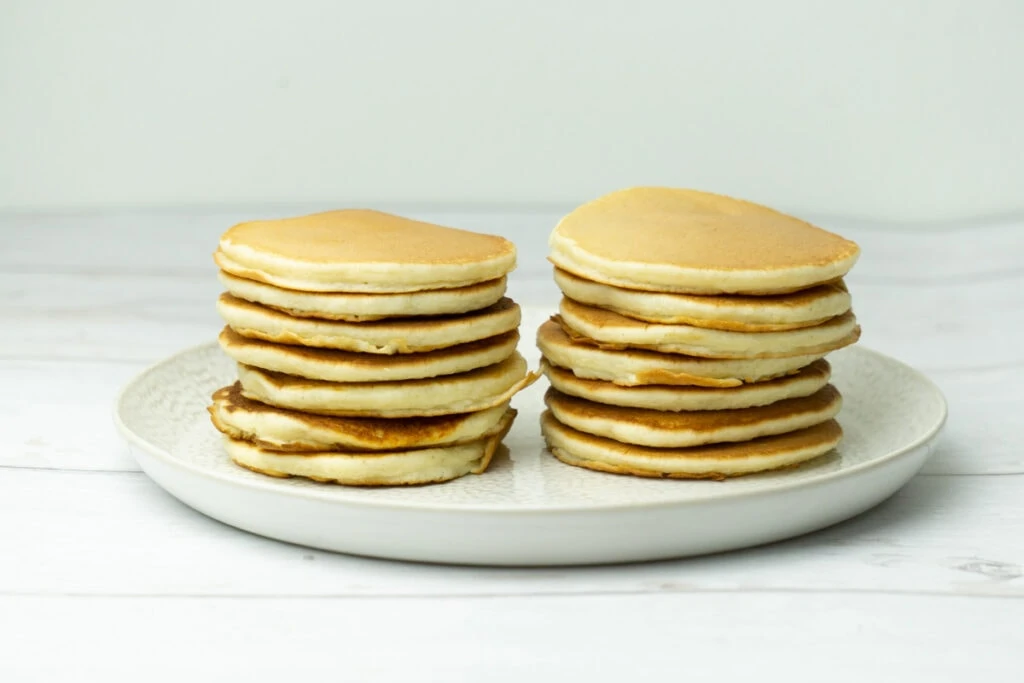
How to make Drop Scones/Scotch Pancakes – Step by Step Method
Sift the flour and baking powder into a mixing bowl.
Add the salt and sugar and stir together.
Beat an egg and add with about 100ml of the milk, stirring thoroughly to make a thick batter, and adding extra milk to thin the mixture to the consistency that you want. The thicker it is the thicker your drop scones will be. You can also make the mixture in advance and leave in the fridge and it will thicken a bit more.
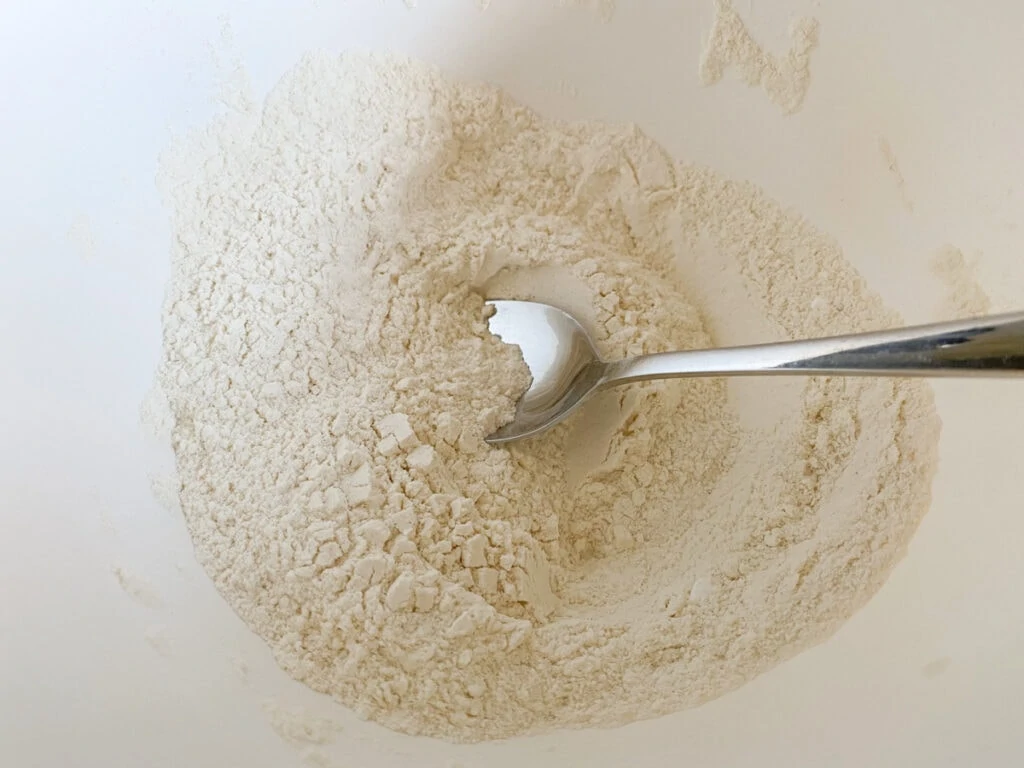
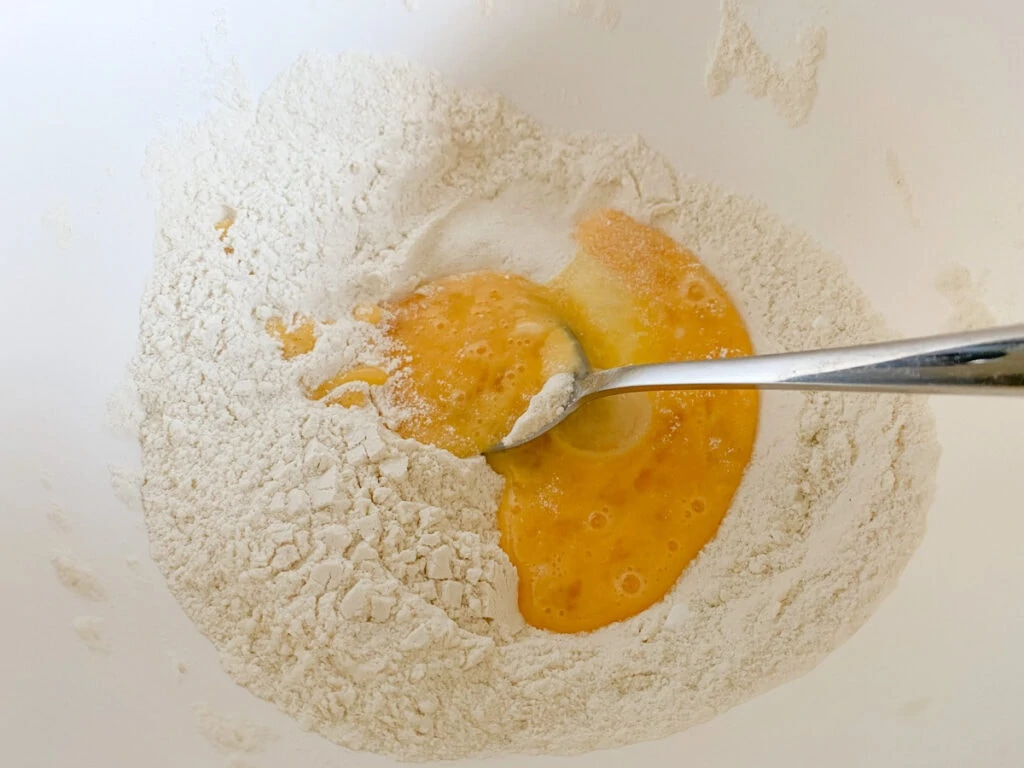
Heat a pan (ideally nonstick) to a medium-hot temperature and put in a drop of vegetable oil or coconut oil to lightly grease it. You can use butter but it has more of a tendency to burn. Once you’ve initially greased the pan you usually shouldn’t need to do so again.
Start with one tester pancake to see how hot your pan is. You’ll usually need to adjust it down a bit to a medium temperature, depending on how hot your stovetop gets.
We use a tablespoon to measure out the mixture into the pan at around 3 to 4 pancakes a time, depending on the size. If you want bigger pancakes then use a 1/4 cup, or freehand pour from a jug.
Once bubbles form on the surface it’s time to flip! Leave for another minute or so in the pan to cook through and remove onto a plate and cover with a tea towel to keep them soft.
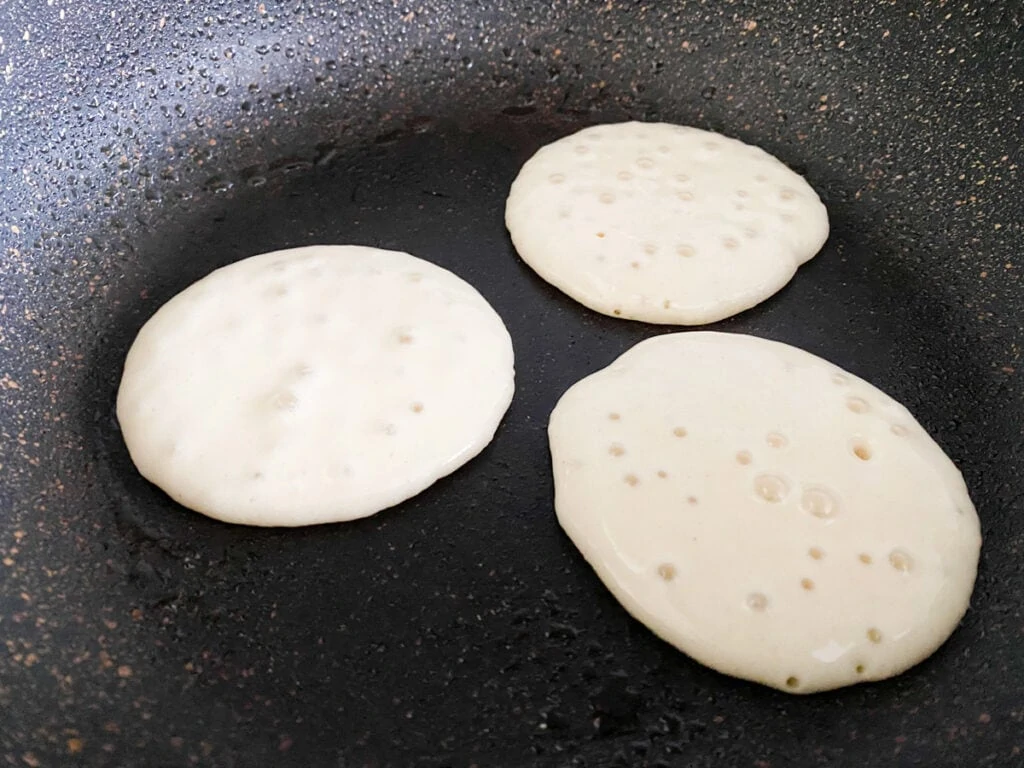
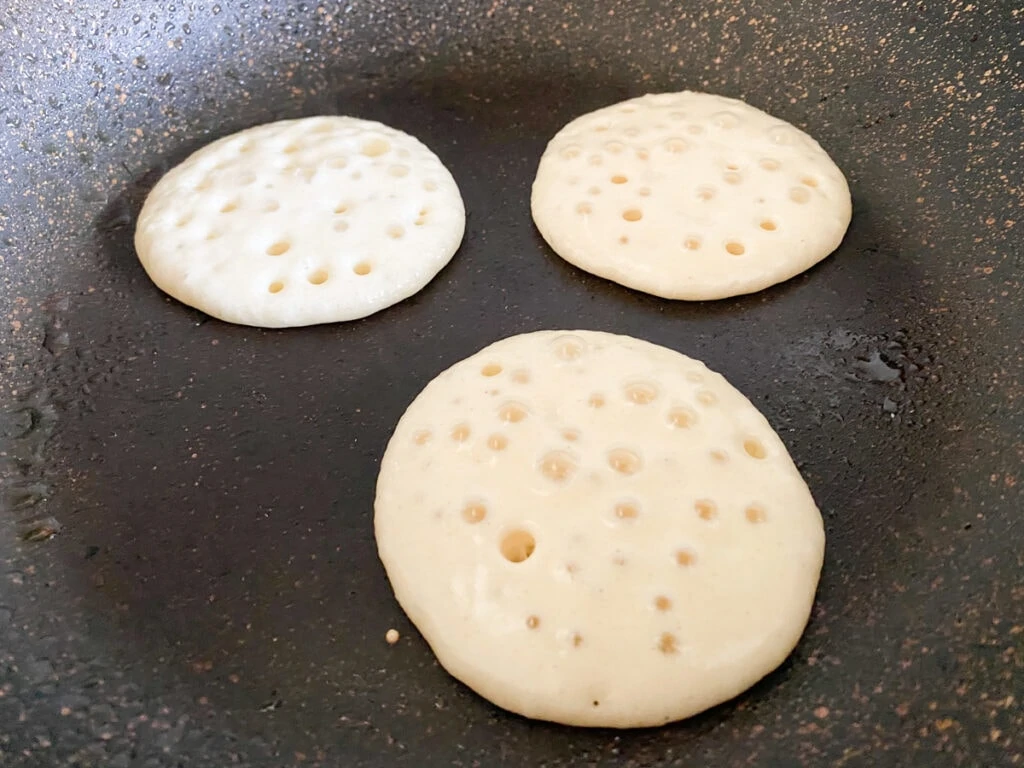
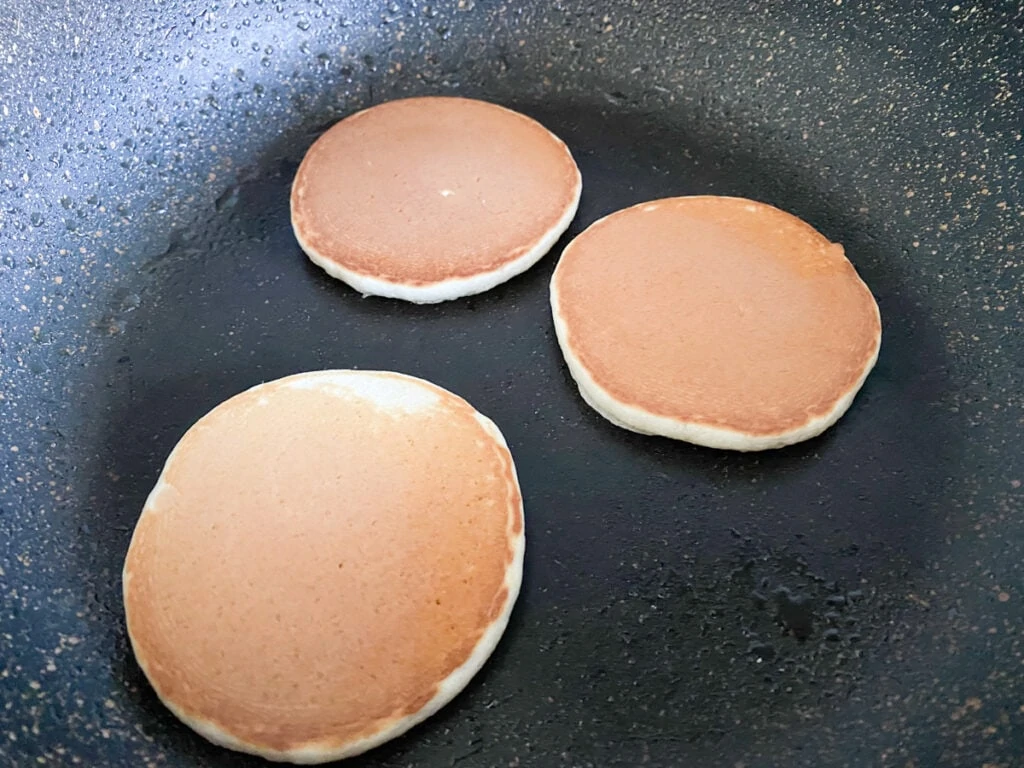
If you’re using a tablespoon to measure out the pancakes this mixture will make around 20 10-12cm pancakes.
Enjoy with your favourite toppings!
What to Serve with Drop Scones or Scotch Pancakes
There are endless options to your toppings! We often eat out drop scones pretty much straight from the pan with some honey or golden syrup. If we feel like going to more effort then berries and bananas with plain or greek yoghurt makes a nice topping. Lots of people just like a lashing of butter.
For cooled drop scones as a snack we like jam and butter or jam and cream, just like any other scone!

Variations
Thicker Drop Scones
For fluffier drop scones add less milk for a thicker mixture so they don’t spread out as much in the pan and will rise more.
Bigger Drop Scones
Traditionally you would use a tablespoon to measure out each drop scone. If you would like bigger pancakes then try two tablespoons or even a 1/4 cup. Another option is to pour your mixture into a jug and then just pour out into the pan freehand. Sometimes we do this and just have lots of different sizes!
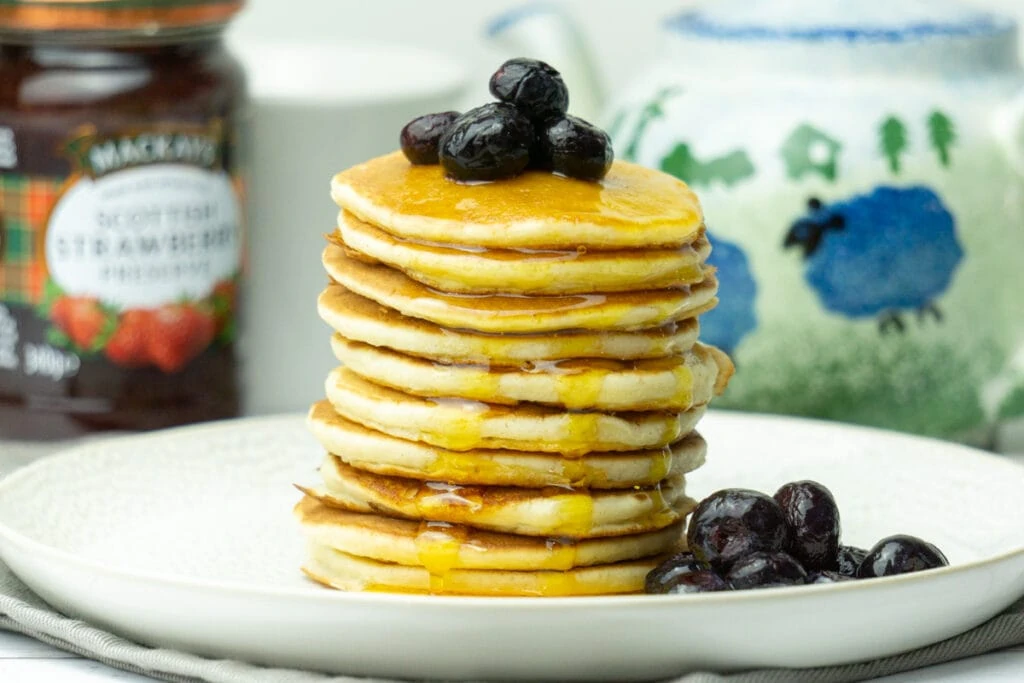
Adding Extras to the Batter
It’s easy to adapt this recipe and make different types of Scottish Pancakes.
For example, sometimes we’ll add a mashed banana and omit some of the flour in favour of some oats.
For serving to our little boy we often omit the sugar or substitute some of it and add honey instead.
You can also add things like chocolate chips or blueberries. To even them out between the pancakes I’ll often scatter a few blueberries on as soon as it’s in the pan before it begins to bubble so that I know each scone has some.
Let us know if you try any other variations!
Drop Scones: Scottish Pancakes Recipe
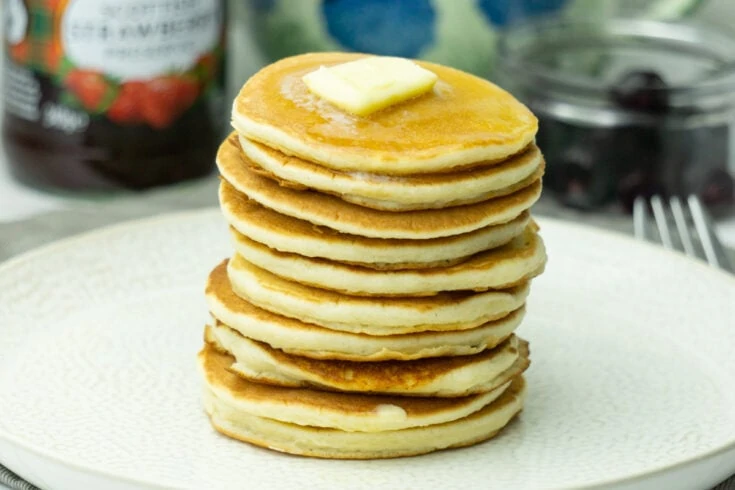
Drop Scones, Scottish Pancakes, Scotch Pancakes, or even Pikelets; whatever you call them, these little fluffy circles of deliciousness are easy to make and so tasty to eat for breakfast or as a snack.
Ingredients
- 125g (1C) Self Raising Flour
- 1tsp Baking Powder
- 1/4tsp Salt
- 50g (1/4C) Caster Sugar
- 1 Egg
- 150-175ml Milk (1/2 to 3/4C)
- Oil for greasing
Instructions
- Sift the flour and baking powder into a mixing bowl.
- Add the salt and sugar and stir together.
- Beat an egg and add with about 100ml of the milk, stirring thoroughly to make a thick batter, and adding extra milk to thin the mixture to the consistency that you want. The thicker it is the thicker your drop scones will be.
- Heat a pan (ideally nonstick) to a medium-hot temperature and put in a drop of vegetable oil or coconut oil to lightly grease it. Once you’ve initially greased the pan you usually shouldn’t need to do so again.
- We use a tablespoon to measure out the mixture into the pan at around 3 to 4 pancakes a time, depending on the size. If you want bigger pancakes then use a 1/4 cup, or freehand pour from a jug.
- Once bubbles form on the surface it’s time to flip! Leave for another minute or so in the pan to cook through and remove onto a plate and cover with a tea towel to keep them soft.
- If you’re using a tablespoon to measure out the pancakes this mixture will make around 20 10-12cm pancakes.
Notes
Serve with butter, golden syrup, honey, berries and yoghurt, jam, or whatever you like!
These are best eaten immediately but can be kept in an airtight container for up to 3 days.
Other Tasty Treats For You To Try
- Simple Almond Slice Recipe
- Paradise Slice Recipe
- Scottish Ecclefechan Tart Recipe
- Homemade Scottish Macaroons Recipe
- Empire Biscuit Recipe: Classic Scottish Double Biscuits
Pin for later!
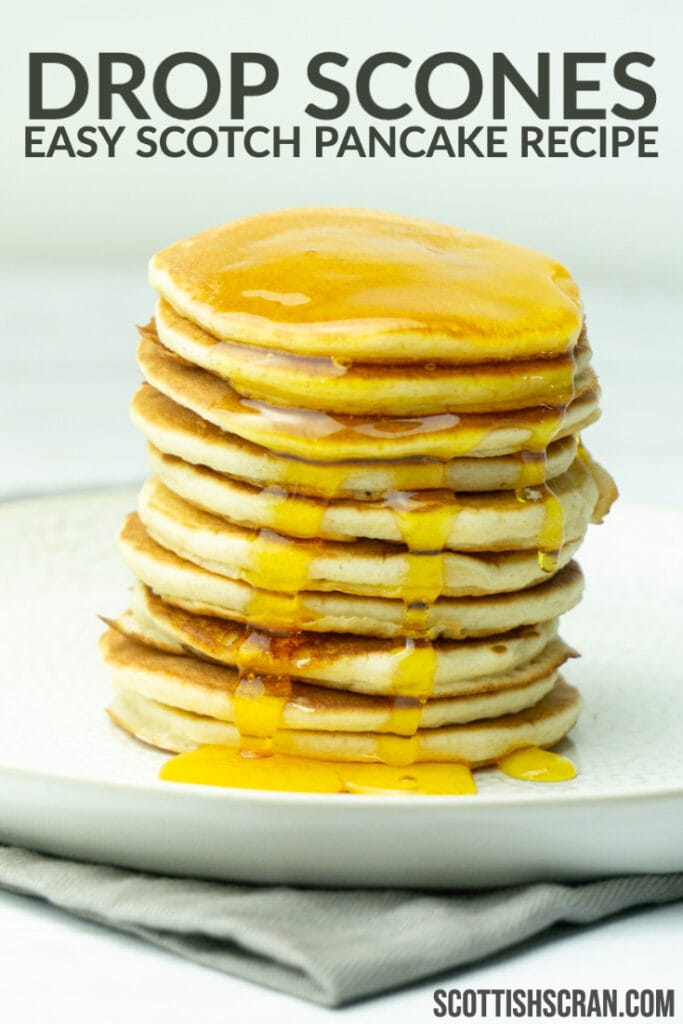

Thanks for the recipe, I have not seen these Scots pancakes for a few decades (I’m a Scot in Scotland, for what’s left of it!). I usually make the French Crêpe or Crumpet, but you have reminded me of our own pancake variation. I look forward to trying your recipe next week, today is a pre planned crêpe day and I can’t get out of that deal.
Something to read while eating those yummy fresh pancakes…
When is a scone not a scone ?
Drop Scones get their name from, as you rightly say, “dropping the mix” onto a hot surface to cook them but, also, a “scone” because it looks like a cartoon style flattened glazed scone when it’s cooked.
A wee bit of cultural background. When is a scone not a scone ?
Actual Scones (“scon”) are in fact a “quick bread”.
“A bread fit for a King” as the old saying goes. It is originally a Scottish bread, first known record dates from around the year 1513.
Scone (“Scown”) means two things in Scots. 1, Name of a historically famous village near Perth/Sterling where the actual Kings of Scotland were crowned upon the “Stone of Destiny”. 2, Literally = a stone or rock.
It is said that, the scone (“scon” bread) is easy to make, but as hard as stone to master.
Etymology corrections for those interested. English “Pikelet” or “picklets” are English regional dialect names for “Crumpet” (French, Welsh or English in origin? it’s hard to find the actual origin of crumpet but, I suspect it’s from the French language). Pikelet or Picklet is not a Scots word, (Scotland and England are not the same culture or country, there is a border). I suspect that your article is using a colonial hybrid variant for a similar food type ?
“Scotch” means 4 different things, 1, the scoring of foods, eg. a bar of chocolate often has “scotched” groves so that you can easily break off smaller squares from the main block. 2, Often used as a bigoted term, or from plain ignorance, that the English use to insultingly describe Scots or Scotland. 3, Another name for Sottish whisky. 4, A brand name for sticky tape.
“Words can start wars” ~ Unknown source.
A tip about “Traditional Recipes”…
Self Raising Flour is a relatively modern invention, from around the 1850’s. So, if you are making foods that originate from before that era, then you are guaranteed it requires Plain Flour (also known as All Purpose Flour).
Pre 1850’s food recipes only used baking soda often with buttermilk (or vinegar or citrus etc. to activate the soda), or, just brewers yeast with sugar, to leaven breads etc.
Now we can use either plain flour or self raising flour but, plain flour tends to have a higher protein content than SR flour. That makes a huge difference to the end product when it’s cooked, more so regarding leaven breads or sponge etc.
Hope that helps everybody avoid a few disasters in the laboratory 🙂
Just the same as my Scottish grandmother made.Delicious!
That’s a definite compliment thank you!
Thank you
I’ve just made these in New Zealand for Pancake Tuesday and they are great. My NZ husband says they are pikelets but I’m from the UK and think that they’re pancakes! He didn’t however let the name get in the way of eating them!
I (Sonja) grew up with them as pikelets too! And now I’m here they’re drop scones haha.
Growing up my gran made the best pancakes, on a girdle. You got to use cream of tartar and a pinch of salt with plain flour, baking powder, a little sugar, milk and egg. The mixture should be thick like custard and let it sit to get slightly thicker.
Trial and error always done it free hand. The cream of tartar gives it a soft creamer finish and they should fluff up to anouthalf an inch thick.